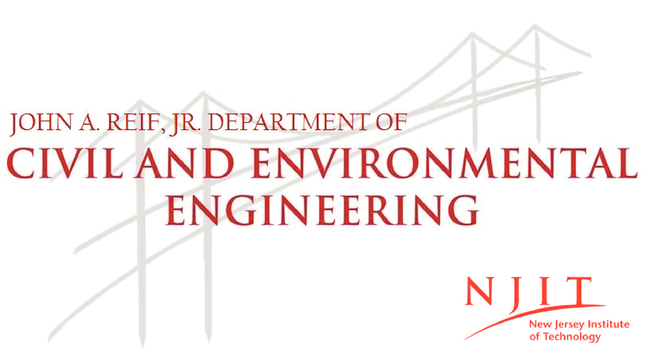
|
Message from the Chair

Dear Friends of Civil and Environmental Engineering,
This May, we celebrated the commencement of 134 undergraduate and 112 graduate students who joined the ranks of CEE ambassadors around the globe. Our students, faculty and staff continue to make impactful contributions in academics, research and service to our state and nation that propel our path to higher achievement. Our face-to-face and distance learning programs remain cutting-edge, and their excellence is reflected in the significant contributions of our alumni to communities around the globe.
Our students continue to excel in our hands-on learning programs and are recognized with internal and external awards, scholarships and fellowships. This year, CEE students participated in regional and national competitions that included the American Institute of Steel Construction Steel Bridge contest, The American Society of Civil Engineers (ASCE) Timber Bridge and Doghouse competitions and the American Water Works Association Water Filter contest, where they achieved high ratings. Our ASCE student chapter has been awarded the 2019 Certificate of Commendation by the organization, a distinction earned by just the top five percent of all the student groups in the nation.
Our faculty and staff are advancing research in our core areas of expertise, including resilient infrastructure systems, environmentally sustainable systems and intelligent transportation systems. We continue to provide support to our beloved city of Newark through collaborations on an integrated connected urban corridor as a pilot deployment of smart, connected transportation technology, as well as on a city-wide replacement of lead-containing water service lines from houses to the street.
I invite you to read about recent CEE highlights in our spring newsletter. As always, I sincerely appreciate and welcome your support of our department's initiatives.
Sincerely,
Taha F. Marhaba, P.E., F.ASCE
(973) 596-2444
(973) 596-5790 fax
|
|
 |
 |
|
 |
 |
 |
 |
 |
|
Advisory Board
Representing a diverse cross section of civil and environmental engineering professionals, including design consultants, construction managers, contractors and attorneys
.
Joseph Stanley, P.E., P.P., '78, '85,
(Chair) Mott MacDonald
Ted Cassera, P.E., '72
Bowman Consulting
Anthony Castillo, P.E., '95 '02
SESI Consulting Engineers
Jerome F. Gallagher, Jr., Esq. '80
Norris, McLaughlin, Marcus, PA
David Good, P.E., '78, '92
Mueser Rutledge Consulting Engineers
Andre Grebenstein, LEED AP '95,
The Martin Group
Tony DeJohn, P.E., P.P.
WSP Parsons Brinckerhoff
Gareth Middleton, P.E., '93 '04
Tishman Construction, an AECOM Company
Rocco Palmieri, P.E, P.P., PLS '72, '77, Partner Engineering and Science
Ed Peralta, P.E.,P.P., AICP, PMP, PTP, PTOE '04, '06 PANYNJ
Maurice Rached, P.E.
Maser Consulting
Ken Sisk, P.E., '95
Pizzarotti IBC
Wei Wang, P.E., '95
Urban Tech
Michael Wright, P.E., P.P., PMP '79 Arora and Associates, P.C.
Editors
Tracey Regan
Diana Ochoa
Sylvana Brito
Special Thanks
Strategic Communications
Office of Alumni Relations
Faculty/Staff, Students & Alumni
|
 |
 |
|
Scholarship
Donations
The
Civil and Environmental Industrial Advisory Board (IAB) has created an annual scholarship fund to assist CEE undergraduate students in preparing for professional licensure. The fund reimburses testing fees to students who pass the Fundamentals of Engineering exam.
Thank you for your generous support of this program.
|
 |
 |
2
019 SCHOLARSHIP AWARD
RECIPIENTS
|
JOHN A. REIF JR, SCHOLARSHIP
|
|
Devan Chattergoon
|
|
Katia Granados
|
|
Michael Lopez
|
|
Carlos Martins
|
|
Jonathan Solano
|
|
Anil Soodeen
|
|
Wayne Vargas
|
|
Louis Yepez
|
|
|
|
CASSERA FAMILY SCHOLARSHIP
|
|
Laura A. Callegari
|
|
Cassandra Raia
|
|
|
|
GALLAGHER MEM. SCHOLARSHIP
|
|
Joseph Oliveros
|
|
|
|
LATA & ATUL N. SHAH SCHOLARSHIP
|
|
Michael A. Hickman
|
|
|
|
LOUIS BERGER SCHOLARSHIP
|
|
Rasha Issac
|
|
Matthew Laub
|
|
Claudia Mucha
|
|
Vidhi Parekh
|
|
Louay Serour
|
|
|
|
ROBERT MEDINA '74 SCHOLARSHIP
|
|
Roberto A. Meneses
|
|
Endrick Rodriguez
|
|
MOLES SCHOLARSHIP
|
|
Matthew Laub
|
|
Conan Cullen
|
|
|
|
SCHOOR DEPALMA SCHOLARSHIP
|
|
Nathaniel J. Bourdeau
|
|
Jerard A. Richards
|
|
|
|
CEE IAB SCHOLARSHIP
|
|
Steven Andron
|
|
Raphael Cobarrubias
|
|
Alex Goldman
|
|
Calvin Gould
|
|
Naveen Kamath
|
|
Christopher J. Riley
|
|
Francisco Sanchez
|
|
Emily Shibata
|
|
Roocha Surma
|
|
|
|
2019 SAMUEL LUCIANO MEMORIAL SCHOLARSHIP
|
|
Anuruddha Jayasuriya
|
|
Lucas Martin
|
|
|
|
SOL SEID SCHOLARSHIP
|
|
Jakob Guido
|
|
|
|
GEORGE F. KELLEY MEMORIAL SCHOLARSHIP
|
|
Angie Carvajal
|
|
|
|
GEORGE GARRISON/SANDY KIRK SCHOLARSHIP
|
|
American Water Works Association Student Chapter
|
|
 |
 |
 |
Alumni News
Mary Ameen '82,
was appointed executive director of the North Jersey Transportation Planning Authority, where she has worked since 2006. She most recently served as deputy executive director, a position she was appointed to in 2012.
Dawson Bloom '92
, j
oined McLaren Engineering Group as civil technical director. Prior to this role, Bloom managed significant projects throughout New Jersey, including Newark's Broad Street Station Plaza, the Edgewater Marina Park and Ferry Landing, and the Clinton Street Streetscape in Newark.
William Duñgo '08,
was named one of Airport Business's Top 40 Under 40 for 2018. This list showcases top talent and leading thinkers in the aviation industry who are building success today and innovations for the future. D
uñgo is a professional
engineer with 10 years of experience performing traffic impact analyses for major airport improvement programs.
CEE Alumni can send their news to be featured in future newsletter to: [email protected]
|
 |
 |
|
Faculty Administration Appointments
Dr. Matthew Bandelt
Associate Chair of Graduate Studies and Director of the PhD Civil Engineering and Environmental Engineering Programs
Dr. Fadi Karaa
Master of Science in Civil Engineering and Master of Science in Environmental Engineering programs
|
|
 |
|
|
|
|
|